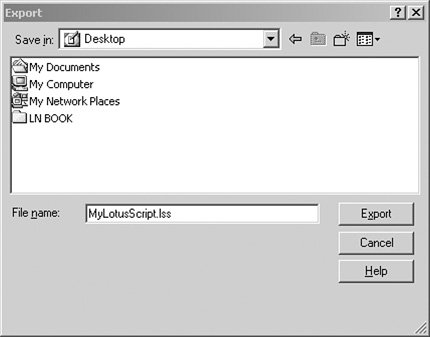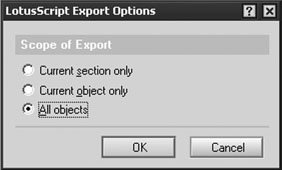Hiding a LotusScript Library
This section illustrates how to hide a LotusScript library from a database design. This is sometimes done to protect proprietary or sensitive code. When implemented, the library is no longer visible or accessible in the database design. All code is stored externally to the database in an ASCII text file that is referenced at compile time. Code that is managed in this fashion cannot be viewed in the Designer client or traced from the Lotus Notes client.
Its important to note that because the code is stored and managed externally to the Designer client, this means that the syntax checking, colors for LotusScript keywords, and the "type-ahead" features incorporated into the Designer client will not be available. Using this approach, the source code will be managed in a text editor such as Microsoft Notepad.
Warning
Be sure to back up and store the LotusScript source code in a secure place when exporting it from the database design. If it becomes lost or corrupt, you will have to rewrite it from scratch. Depending on the complexity of the source code, this could prove to be a virtually impossible task and may also prevent future support for the database design.
To implement this technique, complete the following steps.


